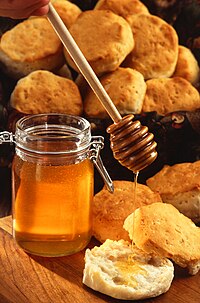
A trypsin inhibitor-like protein secreted by Cotesia vestalis teratocytes inhibits hemolymph prophenoloxidase activation of Plutella xylostella.
Sign Up to like & getrecommendations! Published in 2019 at "Journal of insect physiology"
DOI: 10.1016/j.jinsphys.2019.04.009
Abstract: To establish successful infections, endoparasitoid wasps must develop strategies to evade immune responses of the host. Here, we identified and characterized a teratocytes-expressed gene encoding a trypsin inhibitor-like protein containing a cysteine-rich domain from Cotesia… read more here.
Keywords: inhibitor like; like protein; trypsin inhibitor; cotesia vestalis ... See more keywords

Comparative transcriptome analysis of venom glands from Cotesia vestalis and Diadromus collaris, two endoparasitoids of the host Plutella xylostella
Sign Up to like & getrecommendations! Published in 2017 at "Scientific Reports"
DOI: 10.1038/s41598-017-01383-2
Abstract: Venoms secreted by the venom gland (VG) of parasitoid wasp help ensure successful parasitism by host immune suppression and developmental regulation. Cotesia vestalis, a larval endoparasitoid, and Diadromus collaris, a pupal endoparasitoid, parasitize the diamondback… read more here.
Keywords: venom; plutella xylostella; cotesia vestalis; venom genes ... See more keywords

Alyssum (Lobularia maritima) selectively attracts and enhances the performance of Cotesia vestalis, a parasitoid of Plutella xylostella
Sign Up to like & getrecommendations! Published in 2020 at "Scientific Reports"
DOI: 10.1038/s41598-020-62021-y
Abstract: The use of nectar-providing plants to nourish natural enemies of pest species has become a widely-used approach in conservation biological control to reduce pest damage without the indiscriminate use of insecticides. Choice of plant species… read more here.
Keywords: alyssum lobularia; lobularia maritima; plutella xylostella; cotesia vestalis ... See more keywords

Uninfested plants and honey enhance the attractiveness of a volatile blend to a parasitoid Cotesia vestalis
Sign Up to like & getrecommendations! Published in 2018 at "Journal of Applied Entomology"
DOI: 10.1111/jen.12537
Abstract: A blend of four volatile compounds, (Z)‐3‐hexene‐1‐yl acetate, α‐pinene, sabinene and n‐heptanal, emitted from cabbage plants infested by diamondback moth (DBM) larvae (hereafter called the attractant) attract females of Cotesia vestalis, a dominant parasitoid wasp… read more here.
Keywords: plants honey; attractiveness; honey; uninfested plants ... See more keywords

Host age influence on the parasitism of the species Cotesia vestalis (Haliday) (Hymenoptera: Braconidae)
Sign Up to like & getrecommendations! Published in 2019 at "Egyptian Journal of Biological Pest Control"
DOI: 10.1186/s41938-019-0151-7
Abstract: The parasitoid species Cotesia vestalis (Haliday) (Hymenoptera: Braconidae) is an important parasitoid, mass multiplied and used against the diamondback moth Plutella xylostella (Linneaus) (Lepidoptera: Plutellidae) worldwide. The present study was carried out to investigate the… read more here.
Keywords: host age; cotesia vestalis; host; species cotesia ... See more keywords